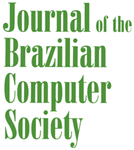Letter from the Guest Editor
A first special issue on Robotics appeared in the Journal of the Brazilian Computer Society in April 1998 (v. 4, n. 3), representing the effort of some of the field "pioneers" in Brazil. Since then, research in robotics has witnessed significant growth in our country, resulting in the establishment of a Special Committee on Robotics (CER - Comissão Especial de Robótica) within the Brazilian Computer Society. This Committee, in collaboration with associations such as SBA (Sociedade Brasileira de Automática), has been conZtributing to develop, expand and disseminate research on robotics in Brazil, fostering the organization of several joint scientific meetings. It organized in 2008 the Intelligent Robotics Journey, jointly with the IEEE LARS Conference (Latin-American Robotic Symposium), the Brazilian Symposium on Artificial Intelligence (SBIA) and the Brazilian Symposium on Neural Networks (SBRN). In the past two years, the Brazilian research community on robotics also contributed to the organization of the ACM SAC Robot (the Special Track on Intelligent Robotic Systems of the ACM Symposium on Applied Computing). Thus, ten years after the first JBCS special issue on Robotics, the organizers of these two conferences (IEEE LARS'08 and ACM SAC Robot'09) considered the time was ripe for another JBCS special edition on the theme, now focused on Intelligent Robotic Systems.
The call-for-papers for this special issue has attracted 12 submissions, and we also invited the authors of the best papers from both IEEE LARS 2008 (2 papers) and ACM SAC ROBOT 2009 (also 2 papers) to submit extended versions of their contributions. Each paper has been reviewed by three reviewers, and based on their recommendations 6 contributions were finally selected for this special issue. The acceptance rate reflects the high quality of the submissions.
The first paper, entitled "NLOOK: a computational attention model for robot vision" by Milton Roberto Heinen and Paulo Martins Engel, extends the contribution that received the best paper award at ACM SAC ROBOT 2009. It presents a computational model of visual attention, capable of selecting fixation points that are less sensitive to 2D similarity transforms, and which can be very useful in robotic vision tasks.
The second paper is entitled "Adaptive complementary filtering algorithm for mobile robot localization", by authors Armando Alves Neto, Douglas Guimarães Macharet, Víctor Costa da Silva Campos and Mario Fernando Monenegro Campos. It presents an algorithm for localization of mobile robots based on the Complementary Filtering technique to estimate the position and orientation, through fusion of data from IMU, GPS and compass.
The third paper is "General detection model in cooperative multirobot localization", by Valguima Victoria Viana Aguiar Odakura, Reinaldo Augusto da Costa Bianchi and Anna Helena Reali Costa. The authors propose to improve the Markov Localization Method based on cooperative multirobot localization. The proposed model improves localization accuracy as compared to conventional single detection multirobot localization, as demonstrated by the experimental results.
The following paper, "Appeareance-based odometry and mapping with feature descriptors for underwater robots", is authored by Silvia Silva da Costa Botelho, Paulo Lilles Jorge Drews Junior, Mônica da Silva Figueiredo, Celina Haffele da Rocha and Gabriel Leivas Oliveira. They propose an approach to visual odometry (i.e., to determining the position and orientation of a robot by images) and to building topological maps using keypoints (based on SIFT features), applied to underwater vehicles.
The fifth paper is by Edson Prestes, Marcus Ritt and Gustavo Führ, and is entitled "An improved particle filter for sparse environments". The authors describe a strategy that combines a path planner based on BVPs (Boundary Value Problem) and MCL (Monte Carlo Localization) to solve the global localization problem in sparse environments, improving the convergence rate in a sparse environment.
Finally, the paper "Compulsory Flow Q-Learning: an RL algorithm for robot navigation based on partial-policy and macro-states", by Valdinei Freire da Silva and Anna Helena Reali Costa, presents a new reinforcement learning (RL) algorithm, which makes use of high-resolution state-space discretisation in the control process, while using low-resolution discretisation in the policy-learning process. Performance of the proposed CFQ-Learning algorithm is close to the optimal policy, as demonstrated by the experiments described.
We would like to thank all the reviewers for their careful evaluation of the papers, and the Chief Editor of JBCS, Maria Cristina Ferreira de Oliveira, for supporting our proposal and assisting us with this special issue. Finally, but certainly not the least important, we thank you for your interest in this special issue.
Fernando Santos Osório
Denis Fernando
Wolf Pablo Javier Alsina
Publication Dates
-
Publication in this collection
17 Dec 2009 -
Date of issue
Sept 2009

